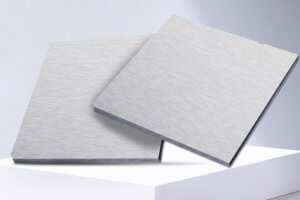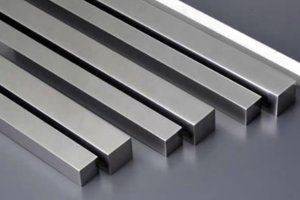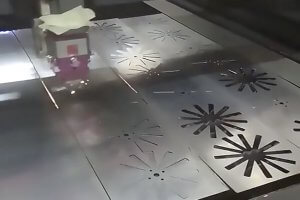Understanding Plastic Rivets: Types, Uses, and Materials
Plastic rivets are versatile fasteners used to join materials in various applications. Unlike metal rivets, plastic rivets are lightweight, corrosion-resistant, and non-conductive, making them ideal for industries like electronics, automotive, and consumer goods.
Types of Plastic Rivets
- Push-Type Rivets: Easily installed by pushing into a pre-drilled hole.
- Snap-Fit Rivets: Designed to snap into place, providing a secure hold.
- Expansion Rivets: Expand upon installation to grip the material firmly.
- Screw-Type Rivets: Combine the features of screws and rivets for removable applications.
Common Materials
| Material | Properties | Applications |
|---|---|---|
| Nylon (PA6/6) | High strength, wear-resistant | Automotive interiors, electronics |
| Polypropylene | Chemical-resistant, flexible | Packaging, consumer goods |
| Polycarbonate | Impact-resistant, transparent | Optical devices, safety equipment |
| Delrin | Low friction, high stiffness | Mechanical parts, gears |
| PTFE | Non-stick, high-temperature resistant | Chemical processing, non-stick surfaces |
In my experience, selecting the right type and material of plastic rivet is crucial for the success of a project. For instance, when working on an electronics enclosure, I opted for nylon snap-fit rivets due to their ease of installation and secure fit, which significantly reduced assembly time.
Why CNC Machining for Plastic Rivets Prototyping and Production
I’ve worked on both sides of the manufacturing equation—rapid prototyping and mass production. In both contexts, CNC machining has proven to be an incredibly valuable tool when working with plastic rivets. Here’s why:
Speed Without Molding Delay
In traditional workflows, producing plastic rivets often meant waiting weeks for injection mold tooling. For prototyping or small runs, this isn’t just costly—it’s wasteful. With CNC machining, I can take a 3D model of a complex rivet, send it to our CAM software, and produce working samples the same day. No mold, no delays.
This matters when you need:
- Design validation for form and fit
- Short-run manufacturing (under 5,000 units)
- Iterative engineering cycles
High Precision for Custom Designs
Many of the plastic rivets I’ve needed in past projects had non-standard dimensions—extra-long shanks, asymmetric heads, or integrated locking mechanisms. Machining them via CNC gives tight tolerances down to ±0.05 mm, which is simply impossible with 3D printing or too costly via mold changes.
Great for Complex Fasteners
Plastic rivets are no longer just round pegs—they’re often small mechanical systems. Some must flex and lock into place, others must accommodate multi-material mating parts. CNC allows us to machine custom geometries and test assembly performance before committing to final production.
Better Material Testing
Before going full scale, CNC lets me quickly try out different materials: from glass-filled nylon for strength to PTFE for slippery surfaces. This is vital for highly specific environments like aerospace or medical where one-size-fits-all just doesn’t work.
CNC Machining vs. Other Manufacturing Methods for Plastic Rivets
| Criteria | CNC Machining | Injection Molding | 3D Printing |
|---|---|---|---|
| Setup Time | Low (same day) | High (mold creation takes weeks) | Very low |
| Cost per Unit (Low Volume) | Moderate | Very high | High |
| Cost per Unit (High Volume) | Higher | Very low | High |
| Material Options | Wide, industrial-grade | Moderate | Limited |
| Tolerances | ±0.01 mm achievable | ±0.1 mm typical | ±0.2–0.5 mm |
| Surface Finish | Excellent with proper tooling | Good | Rough, needs post-processing |
| Prototyping Use | Excellent | Poor (too slow and expensive) | Excellent |
My Take
Whenever I’m helping a team develop a new product—whether it’s a consumer gadget or a medical clip—we prototype plastic rivets in-house on our CNC mill. It gives us total control over the geometry, immediate access to functional tests, and the confidence to move forward.
Industrial Applications: From Concept to Production
Plastic rivets may look like simple components, but their roles are growing more complex across industries. I’ve had clients in five different fields ask for CNC-machined plastic rivets in just the past year. Here’s what I’ve seen:
Aerospace
- Used in lightweight panels, wire harnesses, insulation boards
- Material: Nylon and PTFE
- Requirements: Fire retardancy, tight fit, non-conductive
- CNC’s role: Small production runs with strict quality control
Medical Devices
- Common in disposable devices and modular enclosures
- Material: Medical-grade polypropylene, Delrin
- Requirements: Cleanable surfaces, dimensional consistency
- CNC’s role: Rapid testing and early-stage approvals
Automotive Interiors
- Used in dashboards, door panels, and under-seat assemblies
- Material: Glass-filled nylon, ABS
- Requirements: Strength, vibration resistance
- CNC’s role: Test complex geometries and retainers before mass molding
Electronics Enclosures
- Frequently used to fasten plastic shells or internal brackets
- Material: Nylon, polycarbonate
- Requirements: Snap-fit action, smooth edges, repeatability
- CNC’s role: Confirm locking strength and part interaction
Consumer Products & Wearables
- Used in flexible bands, clips, cosmetic enclosures
- Material: Soft-touch ABS, PC-ABS blends
- Requirements: Ergonomics, visual appeal, tactile response
- CNC’s role: Validate fit and finish
When CNC Makes Sense Across Applications
| Industry | Typical Rivet Volume | CNC Prototyping Use | CNC Production Use |
|---|---|---|---|
| Aerospace | 100–5,000 units | ✅ Essential | ✅ For niche parts |
| Medical Devices | 500–10,000 units | ✅ Critical | ✅ Short runs |
| Automotive | 10,000+ | ✅ Fit/function tests | ❌ Too high volume |
| Electronics | 1,000–50,000 | ✅ Fit/proof-of-concept | ✅ Custom modules |
| Consumer Goods | 500–5,000 | ✅ Ergonomic testing | ✅ Premium products |
My Experience
In a recent job for a drone accessory, we designed a set of custom expansion rivets that had to flex to lock into carbon fiber panels. The part was too intricate for 3D printing and too niche for mold tooling. We CNC-machined a short run of 300 rivets and got our product to market in under four weeks.
Choosing the Right Material for Prototyping and Final Production
Choosing the right material for plastic rivets is something I never rush. In my earlier years, I made the mistake of assuming “any plastic will do.” That mistake led to rivets that cracked, deformed, or worse—completely failed during basic assembly. Since then, I’ve learned how critical material selection is for both prototyping and production machining.
Plastic rivets are unique: they must be strong enough to hold things together, yet flexible enough to snap or expand into place. So when I start a new project, I ask myself a few key questions:
- Will the rivets be exposed to high heat?
- Do they need to resist chemicals, vibration, or UV?
- Will they be installed manually or via automation?
- Is the rivet permanent, or does it need to be removable?
Answering those questions helps me narrow down the right material. But here’s a breakdown of the ones I use most often:
🧪 Comparison Table: CNC-Machinable Materials for Plastic Rivets
| Material | Mechanical Strength | Flexibility | Machinability | Temp Resistance | Chemical Resistance | Cost Level | Best Use Case Examples |
|---|---|---|---|---|---|---|---|
| Nylon (PA6/6) | High | Medium | Excellent | Up to 100°C | Moderate | $$ | Electronics, automotive interior panels |
| Polypropylene (PP) | Medium | High | Good | Up to 90°C | Excellent | $ | Consumer packaging, low-load applications |
| Delrin (POM) | Very High | Low | Very Good | Up to 110°C | Moderate | $$$ | Mechanical parts, aerospace fasteners |
| Polycarbonate (PC) | High | Medium | Moderate | Up to 125°C | Fair | $$$ | Medical enclosures, transparent fasteners |
| PTFE (Teflon) | Medium | High | Poor | Up to 250°C | Outstanding | $$$$ | Chemical plants, high-temp and lubricated settings |
| ABS/PC Blend | Medium | Medium | Good | Up to 90°C | Moderate | $$ | Consumer electronics, wearables, appliance parts |
🔍 What I’ve Learned Through Testing
When working on a custom snap-fit plastic rivet for a smart-home sensor, I tried both nylon and PC-ABS. Nylon worked great for function, but its surface finish didn’t feel premium. PC-ABS gave me a more consumer-friendly look and enough mechanical performance. That kind of hands-on comparison is something I always recommend—even if the specs suggest one material is “better.”
I always run test batches in at least two materials, even for short-run CNC jobs. Sometimes machining behavior (melting, chipping, tool wear) matters more than tensile strength. Delrin, for example, machines like a dream but doesn’t flex—so I avoid it for snap-fit designs.
✅ CNC Machining Considerations for Materials
- Nylon and POM offer great chip control and tight tolerances.
- Polycarbonate is prone to chipping unless the feed/speed is optimized.
- PTFE is hard to clamp and cuts gummy—but it’s unbeatable for harsh environments.
When you match material properties to both the functional AND machining requirements, your plastic rivets will work better, last longer, and be easier to manufacture consistently.
Designing Complex Plastic Rivets for CNC
If you think all plastic rivets are simple push pins, think again. I’ve worked on rivets with internal threads, collapsible legs, and integrated snap arms that rival any mechanical part. Designing these for CNC machining brings real challenges—and real opportunities.
🧠 Key Structural Design Features I Focus On
- Head Design
- Flat head for load distribution
- Dome head for better aesthetics and manual installation
- Countersunk head for flush finishes
- Shank Geometry
- Tapered or barbed shanks for locking strength
- Varying diameter sections to control grip range
- Hollow cores for weight savings and multi-functional rivets
- Locking and Expansion Features
- Snap-fit arms that flex outward
- Expansion fins that compress during insertion
- Interference ridges to hold tightly in blind holes
I designed one rivet for a small appliance that expanded on insertion, twisted into a lock, and had a center core to hold a thermocouple wire. We couldn’t mold it at prototype stage, so CNC saved the project timeline.
✍️ DFM (Design for Manufacturability) Guidelines
| Feature | CNC-Friendly Approach |
|---|---|
| Undercuts | Avoid; adds complexity unless absolutely necessary |
| Sharp corners | Round or fillet to prevent tool stress |
| Wall thickness | Maintain >0.8 mm for strength and tool access |
| Hole placement | Align with standard drill sizes and spacing |
| Micro-features (<0.5mm) | Validate tool availability before finalizing design |
🛠 My Workflow for New Rivet Designs
- Model in CAD – I use parametric features to make quick iterations.
- Check tool access – I validate cutter size and depth in simulation.
- Prototype cut – One-off machining in Nylon and Delrin.
- Functional test – Fit into mating parts, test flexibility, check for cracks.
- Revise & scale – Modify geometry as needed before production run.
Sometimes a rivet may look perfect in CAD but fail in real use—too stiff, won’t expand, or weak retention. That’s why I never skip physical prototyping.
CNC Machining Process: Toolpaths for Prototyping and Production
Once the design and material are dialed in, it’s time to cut. I love this part. CNC machining plastic rivets feels like sculpting—if you get it right, the parts come off clean, precise, and ready to test.
But if your toolpath or setup is wrong, plastic can be unforgiving—melts, burrs, chatter, all kinds of issues.
⚙️ Machines & Tooling I Rely On
- 3-axis CNC mill – Great for 95% of plastic rivet jobs
- 5-axis CNC – For parts with tricky angles or multiple grip zones
- CNC router – Viable for soft plastics in high volume, but not for tight tolerance jobs
- Collet-based micro lathes – Excellent for round-shank rivets, under 5mm
Tooling types I use regularly:
| Tool Type | Use Case |
|---|---|
| Single-flute end mill | For soft plastics like PP, PC, and Nylon |
| 2-flute carbide mill | For stronger materials like POM |
| Reamers | For ultra-smooth internal shank finishes |
| Micro drills (0.5–2mm) | For pilot holes or hollow-core fasteners |
📐 Toolpath Strategy: Prototyping vs. Production
| Step | Prototyping | Production |
|---|---|---|
| Toolpath type | Adaptive, slow feed for precision | Optimized, high-speed repeatable paths |
| Spindle speed | 14,000–20,000 RPM (material-specific) | Same, adjusted for tool wear cycles |
| Workholding | Soft jaws, double-sided tape | Custom fixtures, vacuum tables |
| Cycle time focus | Accuracy | Throughput with acceptable tolerances |
❗ What to Avoid
- Melting – Too slow a feed or too high spindle speed will melt edges.
- Burrs – Use sharp tools and air blast to minimize rework.
- Vibration – For tiny rivets, use low stick-out cutters and vibration-dampened setups.
- Inconsistency in production – Log tool wear cycles, especially when using micro-tools.
🧪 My Tip: Simulate First, Cut Once
Before committing to a batch, I always simulate toolpaths with actual feed/speed values and visual backplots. I’ve caught more than a few collisions and melting issues that way—especially when working on complex fastener profiles or undercut designs.
Tolerances, Inspection, and Surface Quality
When it comes to plastic rivets, people often assume tolerances don’t matter much. But from my experience—especially in aerospace and medical applications—precision matters more than most people think.
In CNC machining, tolerance isn’t just about numbers; it’s about consistency. A rivet that’s 0.1mm too wide might not fit its hole. One that’s too thin could fall out during vibration or thermal cycling. I’ve seen both happen.
🧾 Typical Tolerances I Aim for in Plastic Rivets
| Feature Type | Prototyping Tolerance | Production Tolerance |
|---|---|---|
| Outer diameter | ±0.05 mm | ±0.02 mm |
| Shank length | ±0.10 mm | ±0.05 mm |
| Hole diameter | ±0.03 mm | ±0.015 mm |
| Head height | ±0.10 mm | ±0.05 mm |
| Snap-fit arm clearance | ±0.02 mm | ±0.01 mm |
Even during prototyping, I often push the limits. For one medical-grade PC rivet, we held a ±0.01 mm tolerance on a snap-fit tab using air-blast cooling and high-precision reaming. Sounds extreme—but it made the difference in pass/fail rate during validation testing.
🔍 Inspection Tools and Techniques I Use
- Digital micrometers – For fast checks on outer dimensions
- Dial bore gauges – Useful for shank bores and hole fits
- Optical comparators – For head geometry, symmetry
- Vision measurement systems (non-contact) – Great for micro-rivets and fragile features
- Go/No-Go plug gauges – For quick pass/fail on hole tolerances
I also incorporate in-process inspection for medium-to-large batch runs. Stopping after 100 parts to check every fifth rivet saves time compared to catching a misalignment after 500.
✨ Surface Finish Matters Too
For snap-fit rivets, I shoot for a Ra (roughness average) of under 1.6 μm. Anything rougher increases friction during installation and makes failures more likely—especially with hand-pressed rivets.
If aesthetics matter (think exposed rivets on wearables or consumer electronics), I use:
- Sharp tools
- High RPM
- Minimal DOC (depth of cut)
- Polishing media post-process if needed
I’ve had clients reject otherwise functional rivets because the heads looked scuffed or dull. Don’t underestimate surface finish—especially in product design.
Cost Considerations: CNC vs. Molding for Rivet Manufacturing
The biggest question I get from engineers and procurement folks is:
“Why not just mold it?”
My answer: sometimes CNC is the better financial decision.
💵 When CNC Wins
- Low-to-mid volume production (10–5,000 units)
- Frequent design revisions
- Tight deadlines or no mold lead time
- Testing multiple materials
- Custom or non-standard geometries
📊 CNC vs. Injection Molding Cost Comparison
| Cost Factor | CNC Machining | Injection Molding |
|---|---|---|
| Setup cost | Low ($0–$200 for CAM + fixturing) | High ($3,000–$30,000 for molds) |
| Per-part cost (100 pcs) | $3–$10 per unit | $20–$50 per unit (with mold amortized) |
| Per-part cost (10,000) | $1.20–$1.50 per unit | <$0.30 per unit |
| Lead time | 1–5 days | 3–6 weeks (mold + tuning) |
| Design flexibility | High | Low after mold is made |
📉 How I Help Clients Save
In one project for a handheld scanner, we iterated rivet designs five times in three weeks. CNC made that possible. Had we waited on new molds each time, the product would’ve launched months late.
Another client needed only 2,000 rivets for a limited production run of a marine device. With molding, they would’ve spent $12,000 on tooling alone. We machined them for a third of that.
🧠 CNC Also Saves Indirect Costs
- No inventory risk from unused molded parts
- No mold maintenance or warehousing
- Faster market entry for prototypes and short batches
So while molding is unbeatable at 100,000 units or more, CNC fills a very real and expanding gap in today’s fast-paced product development world—especially for plastic rivets.
Case Studies: From One-Off Rivets to Scalable Production
Let me share a few real-world examples where CNC machining plastic rivets made a huge difference—not just technically, but strategically.
🛰 Case Study 1: Aerospace Prototyping → Pre-Production
- Application: Cable mounting rivets inside avionics bays
- Material: Glass-filled Nylon 6/6
- Challenge: Withstand vibration, fit within tight panels, fire-retardant requirement
- CNC Role: Delivered 300 prototypes with ±0.02mm tolerance and no mold cost
- Outcome: Used CNC parts in flight-certified test run before transitioning to mold
💉 Case Study 2: Medical Device – Snap-Fit with Safety Tab
- Application: Disposable sensor housing with locking rivet
- Material: Medical-grade Polycarbonate
- Challenge: Must “click” into place but be removable by hand
- Design: Integrated snap arm + central hollow channel for wiring
- CNC Role: Machined 1,500 rivets for early deployment across clinics
- Outcome: Achieved market entry 6 months faster by avoiding tooling delays
📱 Case Study 3: Wearable Tech – Custom Expansion Rivets
- Application: Smartwatch accessory bands
- Material: Polycarbonate + UV-resistant coating
- Challenge: Expand during install, invisible from outer view, tight fit to curve
- CNC Role: 3D-simulated curve geometry, machined on 5-axis for precision
- Outcome: 5,000 units produced for launch series, zero molding involved
These aren’t hypothetical. These are jobs I’ve worked on—or helped troubleshoot with partner shops. The ability to respond quickly, adapt designs, and move to production without a tooling bottleneck makes CNC-machined plastic rivets a modern manufacturing advantage.
Technical Challenges & Engineering Solutions
CNC machining plastic rivets isn’t all smooth sailing. I’ve faced dozens of challenges on the shop floor—and learned how to solve most of them the hard way.
Whether it’s warping, tool deflection, or micro-part handling, here are the most common issues I’ve encountered, and what I’ve done to overcome them.
🛠️ Common CNC Challenges When Machining Plastic Rivets
| Challenge | Real-World Cause | My Go-To Solution |
|---|---|---|
| Melting or edge burring | Friction, wrong feeds/speeds | Use sharp tools, increase feed rate, use air |
| Warping during or after cutting | Thin walls, heat buildup | Use climb milling, fixture carefully |
| Tool deflection or chatter | Long reach tools, micro-features | Switch to stub cutters, slow down RPM |
| Cracking on press-fit features | Overly rigid materials or sharp transitions | Add fillets, choose more flexible material |
| Poor surface finish | Dull tools or incorrect flute count | Fresh carbide tools, polish post-process |
| Part movement during machining | Rivet too small or poorly clamped | Use vacuum table, soft jaws, or tape fixturing |
💡 Special Tips for Micro-Rivets
I’ve worked on rivets smaller than 4mm in diameter—and they present a whole new world of problems. For those, I always:
- Machine multiple parts at once using a fixture block
- Use sacrificial tabs to hold them in place until post-machining
- Rely on air rather than coolant (to avoid thermal shock or absorption)
One time, I was machining 2,000 press-in rivets for a compact sensor module. A change in humidity caused the nylon blanks to expand slightly. We switched from bar stock to pre-conditioned blanks and saved the project without remachining.
Future Outlook
It’s exciting to see how the world of fasteners—especially plastic rivets—is evolving. I’m already seeing clients ask for rivets that not only hold things together but track, adapt, or biodegrade.
Here’s where I see things heading:
🔮 Trends in Plastic Rivet Manufacturing
- Micro-riveting with sub-mm accuracy
Wearable tech, microfluidics, and medical devices will demand miniature fasteners that still function with reliability. - Smart rivets
Fasteners embedded with RFID chips or temperature sensors are already being tested in aerospace. CNC allows early-stage development of these hybrid designs. - Sustainable materials
Biodegradable PLA, recycled nylon, or bio-POM are on the rise. I’ve had 3 clients in the past year ask for “green alternatives” to traditional fasteners. - Inline automation of CNC + assembly
We’re now integrating CNC machining of plastic rivets with robotic arms and pick-and-place systems to go from raw stock to rivet insertion with zero human intervention.
🧠 What This Means for Engineers and Makers
If you’re working in R&D, product design, or manufacturing, you can no longer ignore how much rivets impact cost, reliability, and assembly time. CNC plastic rivet machining gives us the flexibility to adapt faster than traditional mass-manufacturing tools can allow.
FAQ
Here’s a rundown of the most common questions I get from engineers, project managers, and startups looking into CNC machining plastic rivets.
- Why use CNC to make plastic rivets instead of molding them?
CNC offers rapid prototyping, lower upfront costs, and more flexibility for small batches or frequent design changes. - Which plastics are best for CNC-machined rivets?
Nylon, POM (Delrin), Polycarbonate, and Polypropylene are great picks. PTFE can work but is harder to machine. - How small can a plastic rivet be machined?
I’ve successfully machined rivets down to 3mm in diameter. Below that, you’ll need specialized tools and fixturing. - What is the typical tolerance for a plastic rivet?
±0.02mm is achievable with the right material and setup. For prototype work, ±0.05mm is more common. - How does the choice of material affect the CNC process?
Some plastics chip easily (Delrin), others melt (polycarbonate), and some are flexible but gummy (PTFE). Feeds and speeds must match the material. - Can I use CNC plastic rivets for structural applications?
For light to medium-duty joints, yes. For high-stress loads, test extensively or move to fiber-reinforced options. - Are plastic rivets reusable?
Some snap-fit designs are reusable. Others (especially expansion types) are one-time use only. - Can CNC-machined rivets be mass produced?
Up to 5,000–10,000 units is reasonable with automation. Beyond that, molding might be more cost-effective. - Is surface finish important for plastic rivets?
Absolutely. A smooth surface ensures easier installation and reduces wear during use. - Can I use a CNC router instead of a mill?
For soft plastics and low-precision rivets, yes. For tight tolerances and clean edges, use a proper CNC mill. - What CAD tools are best for designing rivets?
Fusion 360, SolidWorks, and Siemens NX all work well. I personally prefer parametric modeling for fast iteration. - Can I 3D print a plastic rivet prototype before CNC?
Yes, and I often do. Just keep in mind the tolerance, strength, and finish won’t be representative of CNC-machined results. - How long does it take to CNC machine a batch of rivets?
A few minutes per rivet in prototyping. With optimized toolpaths and fixtures, I’ve hit 500 parts per day on small runs. - How do I hold small plastic rivets during machining?
Vacuum tables, double-sided tape, or nested fixture blocks work best. Tiny parts can move easily, so fixturing is critical. - What causes burrs or fuzzy edges?
Dull tools, wrong feeds/speeds, or gummy materials like PP. Use sharp tools and air blast. - Can I automate CNC rivet production?
Yes. With robotic loaders, vacuum handling, and CAM automation, I’ve helped clients set up low-labor workflows. - Where can I buy raw plastic material for CNC rivets?
I use McMaster-Carr, Curbell Plastics, and local distributors. Look for high-purity rod stock, not recycled filler-based plastics. - Are there standards for rivet design I should follow?
No universal standard for custom plastic rivets—but DIN/ISO can guide hole fits. Always test your design before scaling.
Authoritative References
- Rivet – Wikipedia This comprehensive article offers detailed information on various types of rivets, including their history, applications, and installation methods. 🔗 https://en.wikipedia.org/wiki/Rivet
- Rivet Nut – Wikipedia An in-depth look at rivet nuts, also known as blind rivet nuts, detailing their design, usage, and advantages in different applications. 🔗 https://en.wikipedia.org/wiki/Rivet_nut
- Design for Manufacturability – Wikipedia This resource discusses principles of designing products for ease of manufacturing, including considerations specific to CNC machining processes. 🔗 https://en.wikipedia.org/wiki/Design_for_manufacturability
- CNC Router – Wikipedia An informative article on CNC routers, explaining their operation, applications, and the types of materials they can process, including plastics. 🔗 https://en.wikipedia.org/wiki/CNC_router
- Plastic Joining – Wikipedia This entry explores various methods of joining plastic materials, such as mechanical fastening, adhesive bonding, and welding techniques. 🔗 https://en.wikipedia.org/wiki/Plastic_joining
- Digital Modeling and Fabrication – Wikipedia An overview of digital modeling and fabrication processes, including CNC machining, highlighting how digital designs are translated into physical products. 🔗 https://en.wikipedia.org/wiki/Digital_modeling_and_fabricati
Other Articles You Might Enjoy
- Types of Rivets: A Comprehensive Guide
Introduction: The Critical Role of Rivets in Multiple Industries Rivets are permanent mechanical fasteners that are critical in the assembly of everything from simple structures to complex machinery across numerous…
- Nuts and Bolts Machining Explained: Methods, Standards, and CNC Tips
Introduction: Why Nuts and Bolts Are More Complex Than They Look If you’ve ever walked into a machine shop or looked at a mechanical assembly, you’ve probably noticed one thing…
- Choosing the Right Metal Fasteners: A Practical Guide for CNC Customization or Purchasing
Introduction: Why Metal Fasteners Matter in CNC Projects If you're involved in CNC machining or design, you've likely realized metal fasteners aren't just a small detail. They're often the deciding…
- Stainless Steel Fasteners: What Designers and CNC Machinists Must Know
Why Stainless Steel Fasteners Matter in CNC Applications As someone who has spent significant time around CNC machines and designing mechanical assemblies, I've learned one critical truth: the smallest parts…
- Riveting Quality Starts with Precision: Why CNC Machining Matters
Introduction Riveting is one of those processes people often take for granted. I’ve seen it used in aircraft panels, metal furniture, elevator enclosures, HVAC ducting, and even on high-end kitchen…
- Custom Rivet Nut Manufacturing: Materials, Design & CNC Machining Explained
Chapter 1: Overview of Rivet Nuts I remember the first time I encountered a rivet nut. I was puzzled by its appearance and curious about how something so small could…
- Mastering CNC Drilling: Creating Exact Fits for Pull Through Rivets
CNC machining has become an essential part of modern manufacturing, offering unmatched precision and efficiency. One of the most critical aspects of CNC machining is drilling, particularly when creating holes…
- Custom Stainless Steel Screws with CNC Machining: Techniques, Tools, and Tips
Introduction I first realized how crucial Stainless Steel Screws are in CNC machining projects when I worked on a small manufacturing assignment.We needed durable, corrosion-resistant fasteners for an outdoor piece of equipment,…






